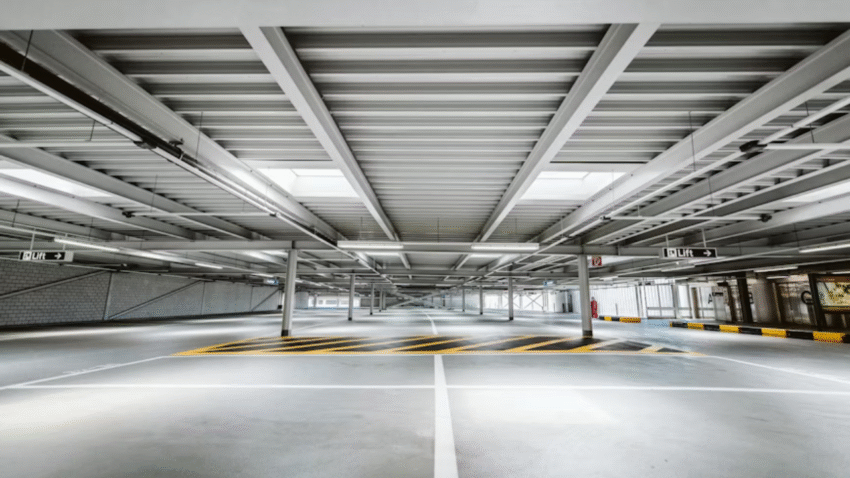Introduction
If your garage doubles as a workshop, you know how loud it can get. Power tools, compressors, and saws can produce enough noise to disturb your family, your neighbors, and even your own concentration. Learning how to add soundproofing to a garage workshop can drastically reduce noise levels, create a more comfortable work environment, and help you stay on good terms with everyone around you.
Why Soundproofing Matters in a Garage Workshop
A garage workshop without soundproofing can easily produce noise levels above 85 decibels—loud enough to cause hearing damage with prolonged exposure. Adding soundproofing offers multiple benefits:
- Noise reduction – Keeps workshop noise from disturbing others.
- Hearing protection – Reduces the need for constant hearing protection gear.
- Better work focus – Minimizes echo and distraction inside the workshop.
- Increased property value – A soundproof garage is appealing for hobbies and business use.
- Improved acoustics – Reduces echo for better sound quality when recording or streaming.
Step-by-Step Guide to Adding Soundproofing
1. Assess the Noise Sources and Escape Points
Before you start, identify where most of the sound is coming from and how it’s escaping:
- Doors – Garage and side doors often have gaps that let noise leak out.
- Walls – Thin walls transmit vibrations easily.
- Windows – Single-pane glass allows sound to pass through.
- Ceiling – If your garage shares a ceiling with living space, sound travels upward.
This will help you target your soundproofing efforts for maximum effectiveness.
2. Seal Gaps and Cracks
Sound travels through even the smallest openings, so start by sealing the space:
- Use weatherstripping around doors and windows to block gaps.
- Apply acoustic caulk around baseboards, window frames, and wall joints.
- Install door sweeps to seal the bottom of the garage and entry doors.
3. Upgrade the Garage Door
A standard garage door is often the weakest link in soundproofing. Options include:
- Insulated garage door panels – Add mass and reduce sound transfer.
- Garage door insulation kits – Inexpensive and easy to install.
- Replace with a solid-core or insulated door if your budget allows.
For extra noise control, you can hang mass-loaded vinyl (MLV) or heavy moving blankets behind the garage door when working.
4. Add Mass to the Walls
The more mass a wall has, the better it blocks sound:
- Install plywood or OSB sheets over existing drywall for extra thickness and density.
- Add a layer of soundproof drywall (like QuietRock) for improved noise reduction.
- For major renovations, remove drywall, insert mineral wool or fiberglass insulation in the studs, then replace drywall.
5. Install Acoustic Panels or Foam
For reducing echo and internal noise:
- Acoustic foam panels absorb sound waves and reduce reverberation.
- Fabric-wrapped acoustic panels look cleaner and absorb a broader range of frequencies.
- Place panels on walls near noisy machines and along opposite walls to cut echo.
6. Soundproof the Ceiling
If noise is escaping into rooms above:
- Add acoustic insulation (mineral wool or fiberglass batts) between ceiling joists.
- Install a second layer of drywall with a damping compound like Green Glue between layers.
- Use resilient channels to decouple the ceiling from the joists for better sound isolation.
7. Treat the Floor for Vibration Control
Some noise is structure-borne, traveling through the floor:
- Use rubber mats under loud machines to reduce vibration.
- Install interlocking foam tiles or carpet tiles to dampen noise and make standing more comfortable.
8. Address Windows
Windows can leak sound easily:
- Use double-pane or laminated glass for better sound insulation.
- Add heavy curtains or soundproof window inserts to block noise.
9. Build a Tool Enclosure for the Loudest Machines
For items like air compressors or dust collectors:
- Build a plywood enclosure lined with acoustic foam.
- Include ventilation to prevent overheating, using duct baffles to maintain sound control.
10. Maintain Airflow Without Sacrificing Soundproofing
Workshops need ventilation, but vents can leak noise:
- Use acoustic baffles in ductwork to allow airflow but reduce sound escape.
- Install vent silencers where possible.
Common Mistakes to Avoid
- Focusing only on one noise path
- Mistake: Soundproofing one wall while ignoring doors or the ceiling.
- Solution: Treat all major sound escape points.
- Using regular caulk instead of acoustic caulk
- Mistake: Standard caulk hardens and can crack, reducing effectiveness.
- Solution: Use flexible acoustic sealant for long-term performance.
- Skipping ventilation planning
- Mistake: Sealing the garage completely without airflow.
- Solution: Include noise-controlled ventilation to maintain safe air quality.
- Installing foam panels for sound blocking
- Mistake: Foam absorbs echo but doesn’t block sound from leaving.
- Solution: Combine foam for absorption with mass materials for blocking.
- Not adding enough mass
- Mistake: Expecting thin layers to stop loud power tool noise.
- Solution: Use dense, heavy materials like MLV, plywood, or soundproof drywall.
Extra Garage Tips & Hacks
- Use removable sound blankets so you can roll them up when not working.
- Add a secondary interior door behind your main garage door for extra noise reduction.
- Organize loud tools to one area and focus soundproofing efforts there for cost efficiency.
- Related read: Check out our guide on building a plywood wall in your garage for added durability and mounting strength.
Conclusion
Soundproofing your garage workshop is a mix of sealing gaps, adding mass, absorbing sound, and controlling vibration. By addressing all the major noise escape points—walls, doors, windows, ceiling, and floor—you’ll create a quieter space that’s better for both you and everyone around you.
Pro Tip: For best results, combine multiple soundproofing methods rather than relying on one approach. A layered strategy is the most effective way to keep your workshop noise inside your garage.
